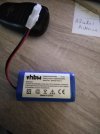Paul, it appears that you are just starting to investigate battery power and there is a LOT to know before risking your expensive locomotive.
Just to address your confusion, it is probably because there are two types of Li-Ion cells; "unprotected" and "protected."
"Some" are using "unprotected cells" that are combined into a battery pack that contains a separate circuit board connected to all of the cells. Basically, you can buy preassembled "battery packs" made from "unprotected" cells that are usually held together with shrink tubing and contain circuitry that connects to all the cells and protects them from over/under charging or discharging and allows for the cells to be "balance charged", i.e. each cell is charged individually through a special charging connector. Many battery packs do not have the individual charging feature. You can buy "unprotected cells" and circuit boards to make your own packs, but it's a bit of a nuisance and could be dangerous. These battery packs are not intended to be disassembled.
The "others" are probably using individual "protected cells" and fitting them into a battery holder like you would individual NiCad or NiMh cells. With "protected cells" each cell has the protection circuit attached to the end of the cell and hidden in the cover, making it a little longer than an "unprotected" cell. The individual cells can be removed from the holder to be charged or there are chargers designed to charge four "protected" cells in series in a battery holder. Four individual Li-ion cells connected in series in a battery holder provide 14.8v nominal, but they are a little larger than standard AAA or AA cells and require a battery holder designed for them.
IMPORTANT: you CANNOT use an ordinary NiMh charger to charge Li-Ion batteries of any type. You MUST match the charger to the battery type and number of cells or you risk fire and explosion!!
Hopefully I haven't simply added to your confusion! There is a lot more to using battery power and several threads on this forum address the issues.


